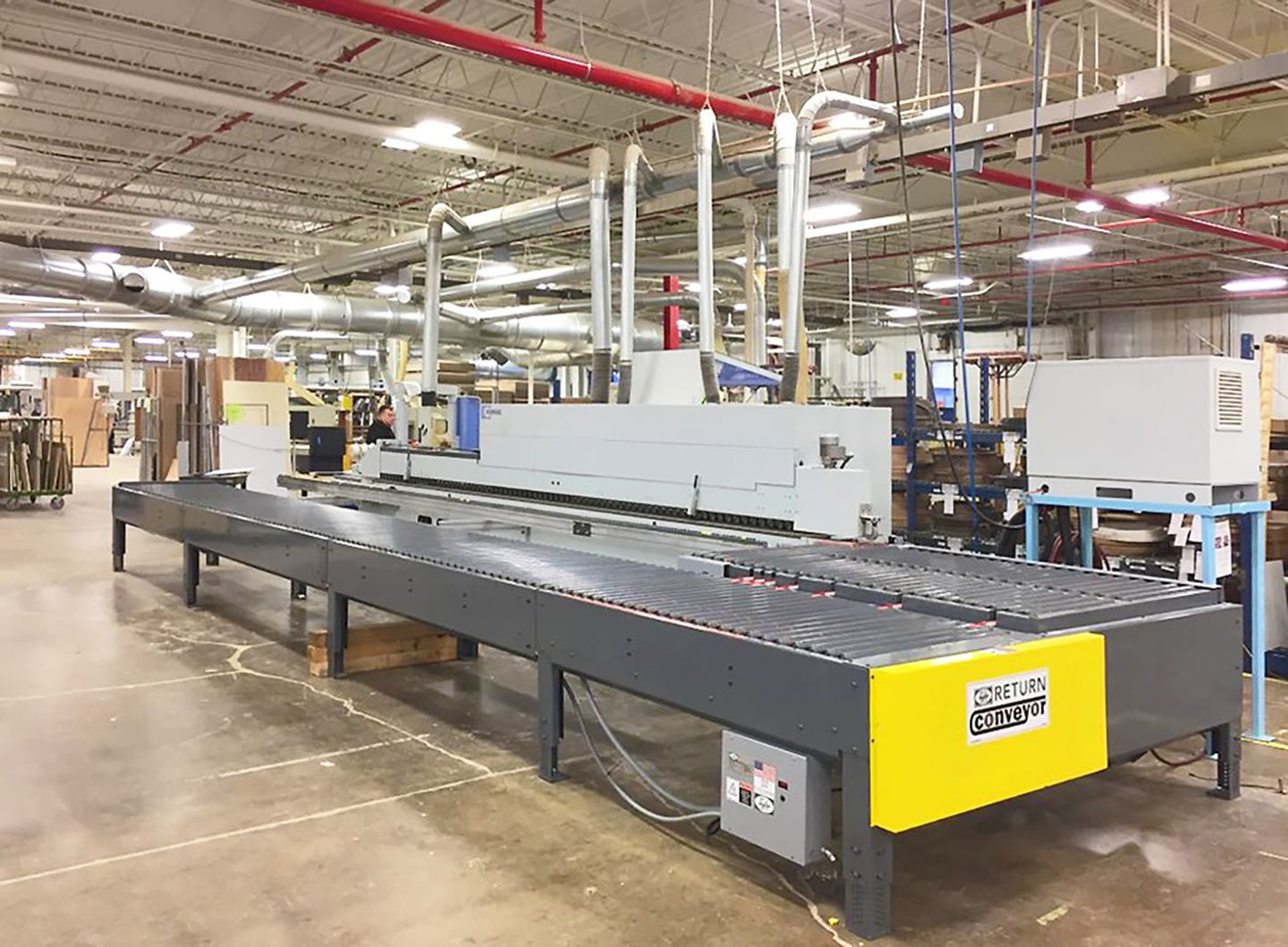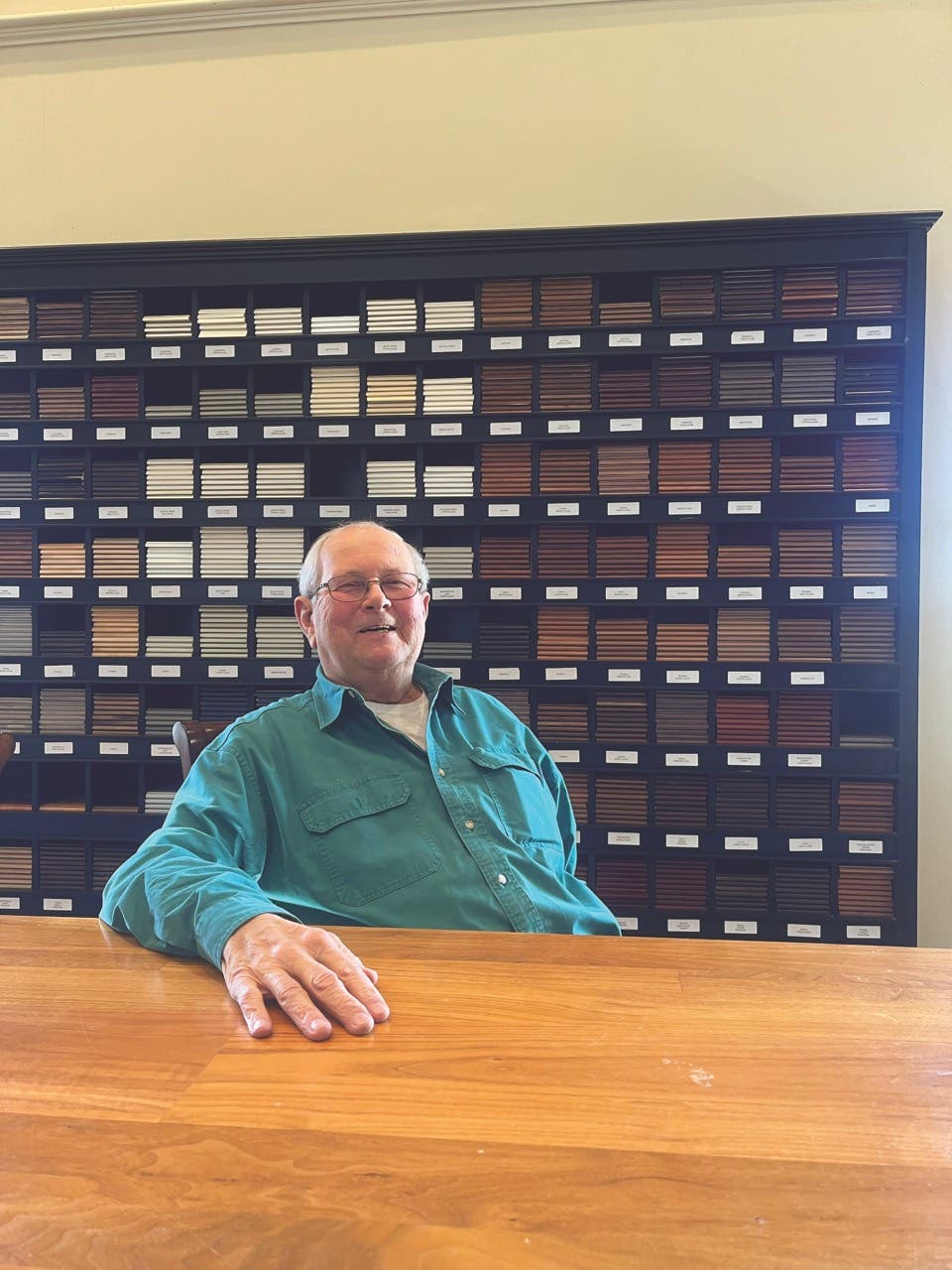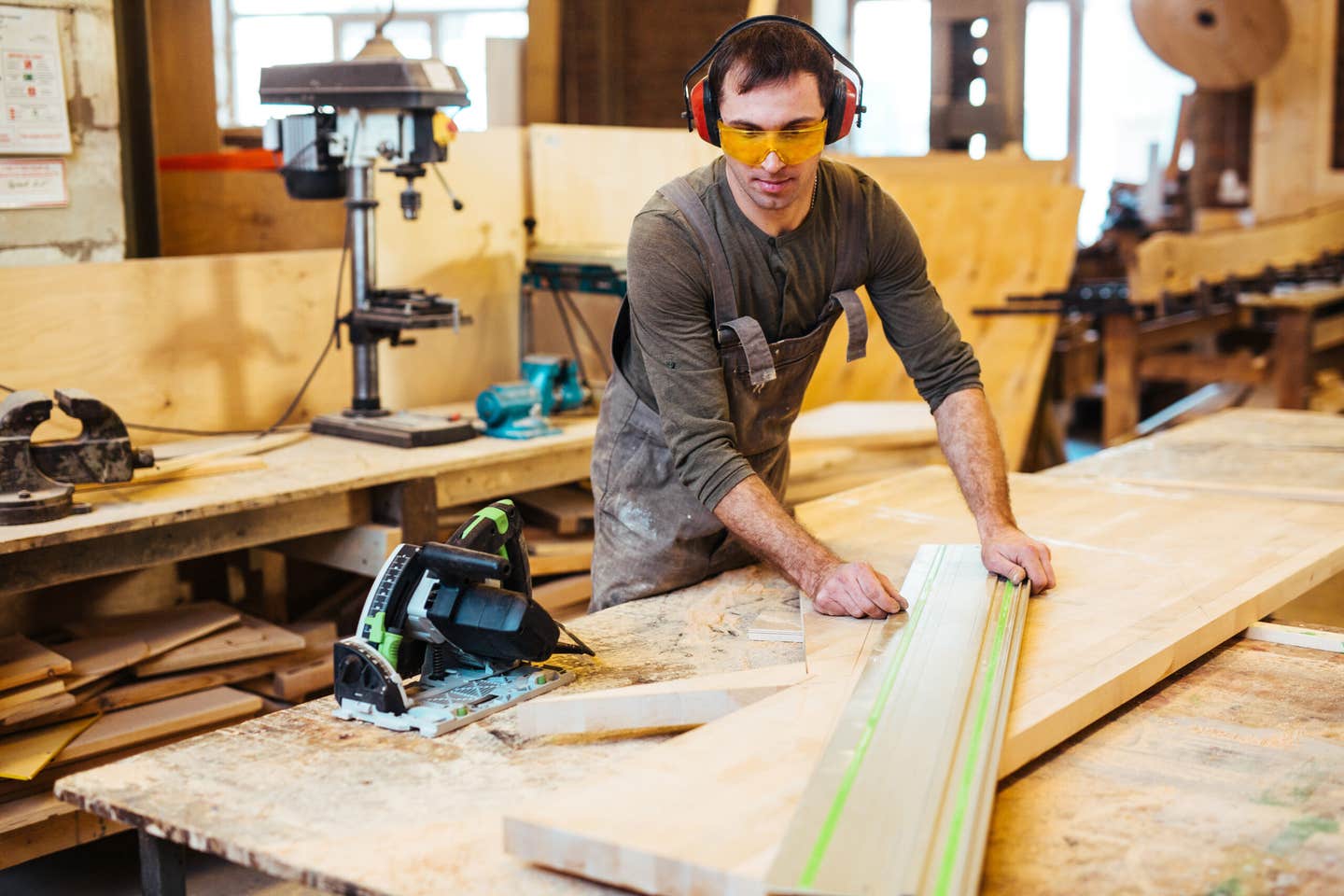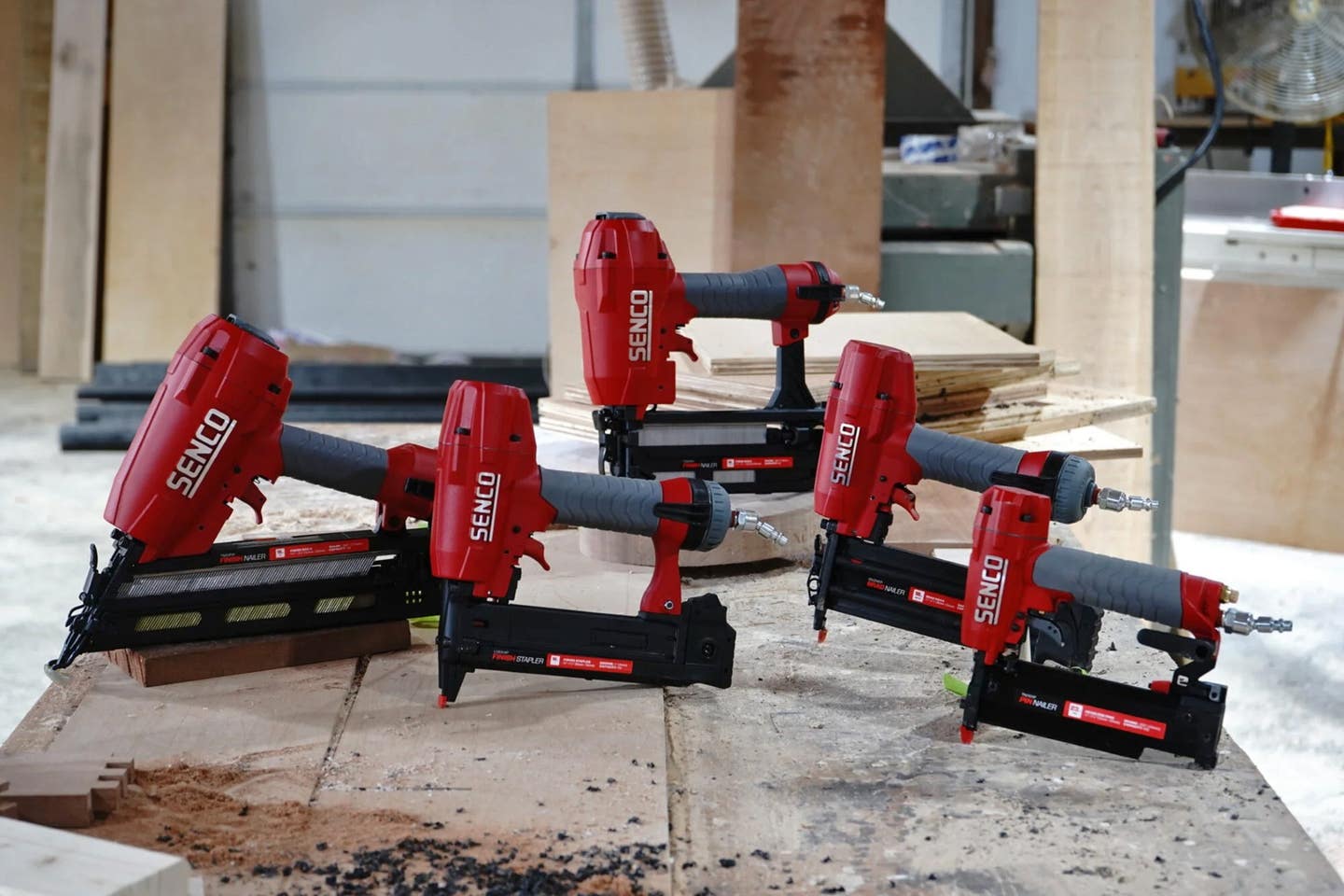Race car driver Rick Mears used to say that to finish first, you must first finish. That’s true of everything that a woodshop builds. A job will always be judged first on the quality of its finish, so we’re not done until the coatings are perfect. Evolution in this field is a mixed blessing. Just as woodworkers get used to a line of products and the nuances of its behavior, the manufacturers find a better way of doing things.
Keeping up with what’s new and what’s coming is an essential part of the job, and there’s a lot to track.
If there’s one immutable fact in the wood coatings world, it’s that there’s a delicate relationship between finishes and the environment. So, whenever a manufacturer finds a way to lessen impacts or provide a more sustainable way to produce products, woodworkers pay attention.
AkzoNobel has done just that. Its research at the University of Groningen, led by Nobel Prize winner Ben Feringa, is discovering a more sustainable way of making resins using bio-based monomers rather than the traditional oil-based. Bio-based monomers will help reduce the carbon footprint of coatings production, and if the research meets the current expectations this will be a seismic shift in coatings science. However, it could be five years before the first products are available.
New products
Axalta Coating Systems (axalta.com) has released the next generation of its Amarium pre-catalyzed lacquers, which the company says are known for their ease of use, quick drying times and durability. They offer excellent clarity and provide enhanced UV protection, and their single-component finish is ideal for cabinets, furniture and other interior wood surfaces. And the recent addition of the Imron Industrial Wood product line marked Axalta’s official expansion into the polyurethane market.
Dow has introduced three performance additives, based on silicone chemistry, for waterborne wood coatings. Dowsil 211S enhances mar resistance, slip, and block resistance performance. Dowsil 107F works for varnishes, and acrylic, styrene acrylic and VAE emulsion paint for architectural wall coatings. It reduces defects and microbubbles in the coating film. Dowsil 402LS offers blocking resistance, while improving the flow and levelling properties. It contains no solvent, benzene, toluene or xylene. Dow can provide paint formulation guidelines to woodshops at dow.com/coatings.
Healthy.Wood from Milesi (milesi.com) is a line of polyurethane, acrylic, UV, nitrocellulose, waterborne and solvent-based coatings that deliver sanitizing features. Laboratory tests in accordance with ISO 22196 regulations show that bacterial growth is reduced by more than 99.9 percent on surfaces that are coated with these products. The company says they are the ideal choice for all situations where hygienic conditions are a must, such as restaurants and medical facilities.
Aseptica, distributed by Ceramic Industrial Coatings in Osseo, Minn., is an antimicrobial conversion varnish from ICA. The presence of active metals boosts durability and protects the coating film from bacterial attack, according to the companies.
Clariant (clariant.com) has introduced Ceridust 1060 Vita, a bio-based wax additive for furniture, flooring, window frames and beams. It can also be used for powder coatings.
AkzoNobel’s new Rubbol coatings dry fast and adhere well, making them a good choice for windows and other weather-exposed architectural elements.
New technologies
MakeItMetal is a sprayable metalizing process that can be applied to virtually any substrate material for interior and exterior use, including MDF. It’s a powder comprised of metals mixed with resin. It can reproduce brass, bronze, copper, gold, iron, nickel silver and white bronze in a range of finishes. Virtual training is available at makeitmetal.ca.
Benjamin Moore presents a free Color Portfolio app that displays the company’s colors on multiple surfaces, and the ColorReader device, which takes a color measurement from a flat surface and displays three of the closest color matches.
M.L. Campbell’s Arroyo is a single-component, hybrid waterborne urethane system for interior use. Developed to apply with an unlimited application window, it reduces waste and eliminates mixing steps. It’s Greenguard certified, ready to spray with no reduction or catalyzation required, and has no pot-life restrictions, according to the company.
Aqua-Coat makes interior water-based stains using high quality aniline dyes and pigments. They can be brushed, wiped, sprayed, or dipped.
Rubio Monocoat makes a plant-based, hard wax oil wood finish that keeps the natural look and feel of the wood.
Bloxygen (bloxygen.com) is a treatment for storing coatings in the can for up to ten years. It uses harmless argon gas to block oxygen from contaminating liquid finishes. The company has released a new downloadable instruction manual.
Top colors in 2021
Knowing what’s new in coatings technology is just half of the battle. Choosing palettes of colors to show clients is just as critical, and it’s difficult to keep one’s personal tastes out of the equation.
In an effort to track market tastes and trends, and perhaps to forge – or at least to influence – trending colors, most of the major coating manufacturers predict what they believe will be the most popular palette over the next year. Their choices are the result of extensive trend research, so they’re usually a pretty good indicator of where homeowners and interior designers are headed. Almost unspoken here is the wish to move on from a year of divisive elections and the pandemic, and a very human need to make our spaces feel more optimistic but also more welcoming and solicitous.
For this year, earth tones and pastels seem to be making a major statement, and there’s also a distinct move toward painting the wall cabinets a lighter shade than the base cabinets. These less intense colors seem to work well with natural wood elements such as bamboo or butcherblock counters, thick floating shelves and darker woodgrains in laminate flooring.
Benjamin Moore’s choice is Aegean Teal (2136-40), described as “intriguing, balanced, and deeply soothing”. There are 12 hues in the collection, ranging from off-whites through rose and clay to gray and teal. The colors do exude an aura of comfort, peace and home.
The choice from PPG Paints is called Be Well. “Softened hues serve as release for over-stimulated, weary consumers,” the company says. “In an era where normal is no longer and mental and physical well-being have become more important than ever, consumers are craving simple comforts and a slowed-down lifestyle.” The collection includes Transcend, Big Cypress and Misty Aqua.
Behr promotes 21 colors to “elevate your comfort zone with earthy yet refined tones”.
Last fall, Axalta released its new Wood Vibes collections that focus on interior color and wood finishing trends. Among the collections is Mood, which “evoke feelings of tranquility and calmness”. The collection features a mix of bright colors, soft pastels and refined wood tones that are titled Spirit, Lively, L’amour, Cozy, Effortless, Cheers, and Namaste. The cumulative effect is of muted blues, greens and browns that are probably going to work quite well for kitchen and bath designers, as the appetite for stark white spaces wanes.
Sherwin-Williams’ Rhythm of Color is a collection of mostly muted grays and browns, while Sanctuary is a collection of soft neutrals. Its Encounter collection features rich earthy and dark, textured finishes. Continuum blends whites, charcoals and pops of color found in the natural environment. Tapestry incorporates metallics and jewel tone finishes.
AkzoNobel is going with Brave Ground, a warm neutral shade, that’s featured in four color palettes, named Expressive, Trust, Time and Earth, created for use with specific wood products.
Old Masters in Orange City, Iowa (myoldmasters.com) also espouses warm colors and earth tones. In its January blog, the company shows a room with a floor stained with dark Spanish Oak, and then suggests 18 lighter, muted pastel and earthy paint colors that pair well with it.
Pantone is the color standard for the printing industry and most fields of production. More than 10 million designers and producers around the world rely on Pantone products and services to help define, communicate and control color. For 2021, the Pantone Color Institute has chosen Ultimate Gray (17-5104) and a yellow called Illuminating (13-0647) as its colors of the year. The Institute says that these two independent colors highlight how different elements come together to support one another.
This article was originally published in the March 2021 issue.







